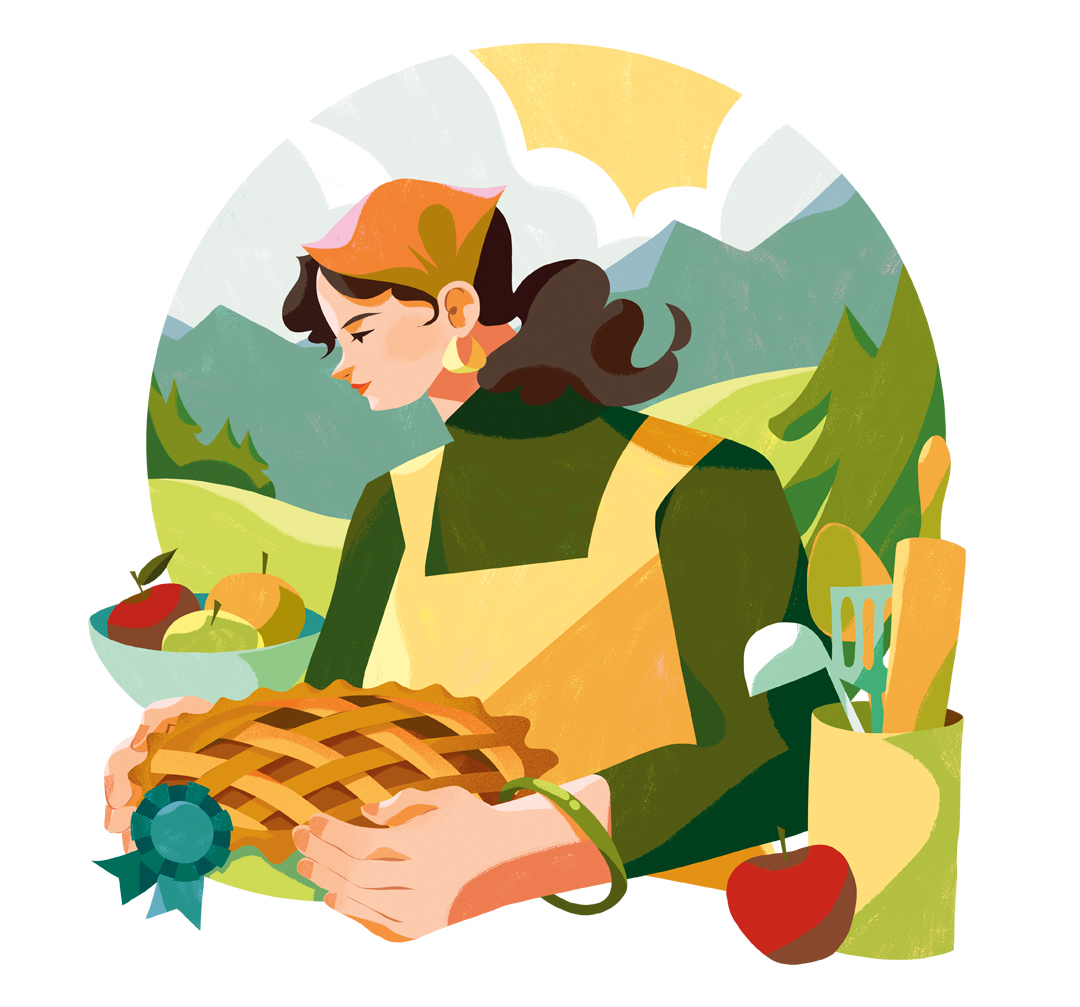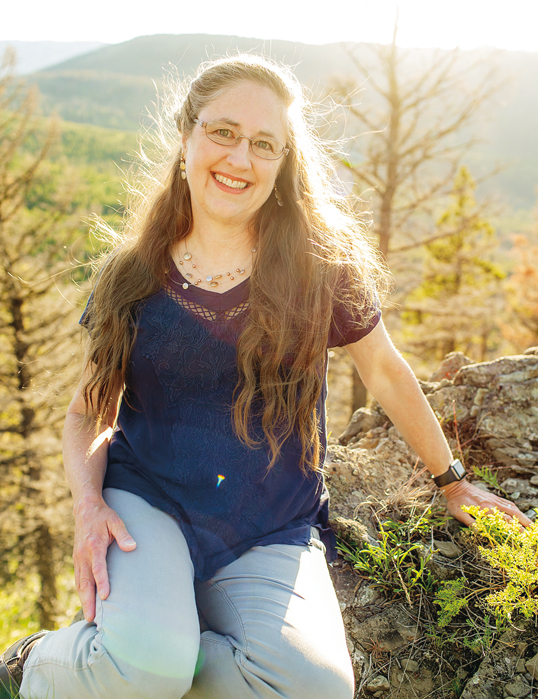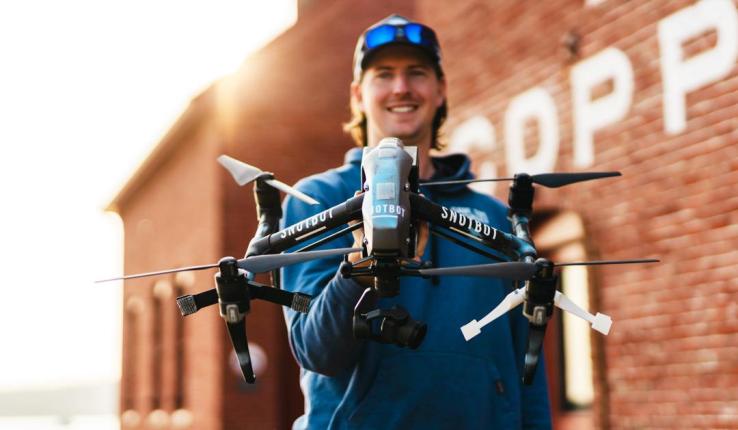You want to use a light touch when you’re rubbing, or cutting in, the shortening because you don’t want to squeeze the air out of it; you don’t want to develop the gluten in the crust. I just use my hands. After adding the shortening, I cut it up into smaller pieces using a table knife. I then scoop up some of the flour-shortening mixture with both hands and rub my thumbs across my fingers to create fine crumbs of shortening coated in flour. Air is incorporated as the pieces fall back into the bowl. Gently combine into a ball of dough after adding water. Roll out the dough with single strokes, rotate the disk 45º, and repeat.
The amount of water you have to add to the pie crust will vary each time you make it. Factors like humidity and how much water clings to the shortening (if you measure using water displacement method) affect how much water you have to add to get the dough the right consistency.
For the Montana Winter Fair, I did a mix of apples because each variety brings a different flavor, brings a different texture. That’s one of the secrets—don’t just use one type of apple. You get a more complex flavor and texture than if you just use one type of apple. You want to use baking-type apples, not Delicious or other eating-only apples.
The year I won, my magic formula was: one Golden Delicious, one Granny Smith, two Jonathan, two Braeburn and a Fuji.
Fresh spices. That’s the third key. The judges could tell if the spices had been sitting in my cabinet for three years versus freshly ground. I usually do buy whole spices and then I grind them periodically to fill my ground spice jar to get that more vibrant flavor.
While it is fun to bake a pie that looks amazing with a fancy crust design, an “ugly” pie can be just as delicious and bring just as much joy to others. Don’t beat yourself up if your pie doesn’t come out looking “perfect.”
Carol (Cochrane) Kankelborg ’86 received her degree in electrical engineering.
____________________________________________
APPLE PIE RECIPE
9-inch Double-crust Pie Crust
Pies, Prepared
Servings: 8
Source: Carol Kankelborg, based on Better Homes and Garden New Cook Book (1953) (p. 302–304)
INGREDIENTS
2 cups flour
1 teaspoon salt
2/3 cup shortening chilled
6 tablespoons ice water, or more as needed
DIRECTIONS
Sift flour and salt together in a bowl. Whisk together. Rub in shortening. Form well in mixture and add ice water. Gently mix together. Turn onto a floured surface. Knead lightly one or two times to form a cohesive mass. Divide dough in half. Roll out one half for the bottom and the other for the top. Avoid over-handling the dough.
NOTES: The colder the ingredients are at the beginning, the more the trapped air can expand and make the crust flakier.
Winter Fair Apple Pie
Garden, Pies, Prepared, Type-Dessert, US, Winter Fair
Prep Time: 1 hours
Cook Time: 40 to 50 minutes
Servings: 8
Source: Carol Kankelborg, based on "Fresh Apple Pie" recipe from Betty Crocker's Cookbook, New and Revised Edition (1978), p. 295.
INGREDIENTS
9-inch Double-crust Pie Crust
1/2 inch cinnamon stick (1/2 t. ground)
1/6 whole nutmeg (1/2 t. ground)
7 berries allspice (1/4 t. ground, optional)
3/4 cup sugar
1/4 cup all-purpose flour
1 dash salt
6 cups apples peeled and sliced
2 tablespoons butter
DIRECTIONS
Preheat oven to 425 degrees F.
Make pie crust and line 9" pie plate. Grind spices in a spice grinder. Mix sugar, flour, spices, and salt. Peel, core, and slice apples. Pour sugar mixture over apples and toss to coat. Turn mixture into pie plate. Dot with butter. Cover with top crust. Prick with fork. Cover edge with a 3-inch strip of aluminum foil; remove foil during last 15 minutes of baking.
Bake until crust is brown and juice begins to bubble through slits in crust, 40 to 50 minutes.
NOTES:
For best flavor, use a variety of apples. The best are McIntosh, Golden Delicious, and Gala. Next are Rome Beauty and Jonagold. 1 pound of apples = 3 medium = 3 cups sliced
For best texture, use thick slices of apples and lay them in pie plate for best filling factor.
Be creative in how you prick or cut designs in the top crust and how you flute the edges.






